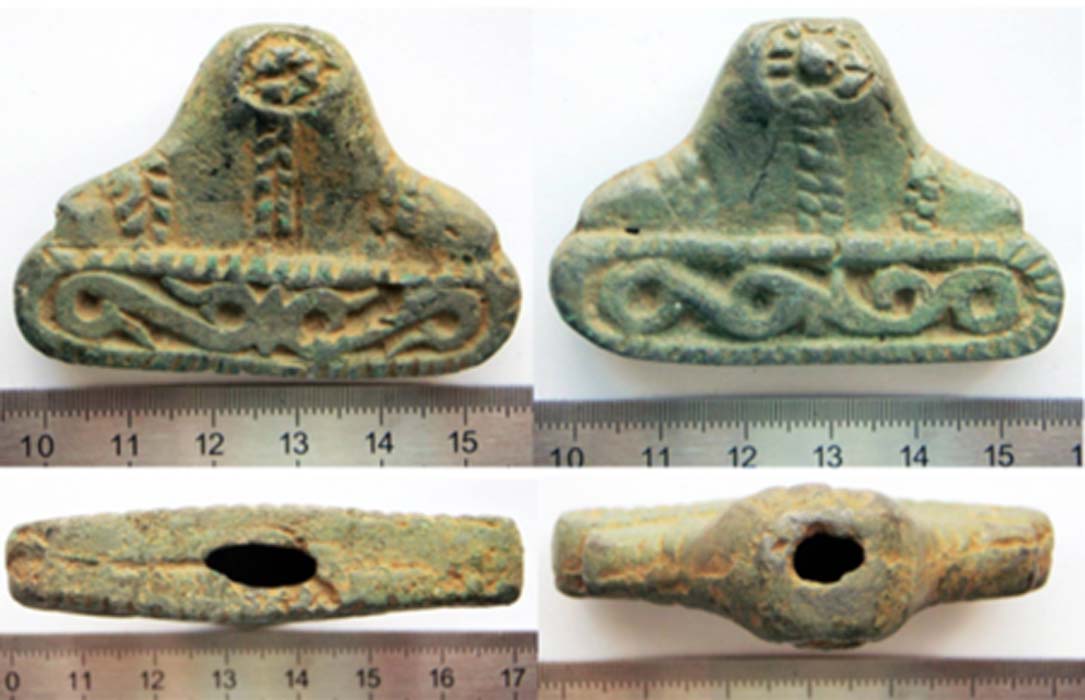Huge Hoard of Viking Sword Parts Found in Estonia
Archaeologists have uncovered the fragments of about a hundred swords that once belonged to Viking warriors. They were unearthed in the Baltic country of Estonia. The experts believe that the fragments were once part of weapons used as grave markers or funerary monuments for warriors.
The fragments were uncovered in two separate although neighboring locations, near the coast in Northern Estonia. ERR reports that Mauri Kiudsoo, an archaeologist and archivist from Tallinn University, stated that the “two sites were located just 80 meters apart”. “The fragments were found in the territory of the ancient Estonian county of Ravala, late last autumn” according to ERR. This is not far from the capital of Tallinn.
Viking-era burial monument
In the two finds were found several dozen fragments from swords and also a collection of spearheads. Researchers have established that the artifacts were of a type used by the Vikings. Archaeology.org reports that they have been dated to “the middle of the tenth century AD”. Some sword hilts were recovered, and they have Viking era design motifs.

Some of the hilts bear Viking era designs. ( Estonia Dept for the Protection of Antiquities / ERR)
Fragments of 100 Viking swords unearthed in north Estonia
It seems that the swords were deliberately destroyed by the Vikings, who would break up weapons as part of their burial customs. The fragments were parts of a memorial to a warrior or group of warriors who had died. Archaeology.org quotes Kiudsoo as saying that “bits of broken weapons may have been cenotaphs or items left as a monument to warriors”. They may have been commemorating Vikings who had fallen in battle or died on trading missions and been buried elsewhere. This may explain why no human remains were found at either of the two sites.
The finds were made in an area that was situated near a major Viking trade route. These fierce Scandinavian warriors often raided the area of what is now Estonia. They also established trade outposts and hill forts in the region, especially in coastal areas. However, they never managed to conquer the fierce Finnic tribes in the interior, who retreated into marshes and forests in the face of the Viking assaults.

Modern replica H-type Viking sword. (radekprocyk / Adobe Stock)
H-type Viking swords
The fragment hoard found at Ravala is the largest find of Viking weaponry parts in Estonia. They are very similar to other Viking-era swords in Northern Europe. The grips of the swords helped the experts to classify the weapon. ERR reports that Kiudsoo stated that “the grips of the swords allow us to determine which type of swords they are”.
The parts have been definitively identified as coming from swords of the H-shaped type. They were double-edged swords and were very effective weapons and gave the Vikings a real advantage over their enemies. This type of sword was widely used as is evident in the fact that some 700 have been found over a wide geographical area. These weapons were used by Vikings in their battles and raids all over Northern Europe and beyond.
- Vikings Brutally Slain in 750 AD May Have Been on a Peaceful Mission
- Discovery of Two Boat Burials Changes Viking Timeline
- The Ancient Legend of the Monstrous Rat King
Vikings in the Baltic
The latest find means that the number of H-type swords found in the Baltic country has now risen to about one hundred. They have mainly been found in the north of the country. The find is demonstrating that the H type swords were in use by at least the mid-10 th century in the Baltic area.
The discovery of the fragments of the swords is adding to our knowledge of the Viking-era in Estonia. They demonstrate that the northern coastal area was under the direct influence of these fierce warriors and great traders. It is possible that more finds, similar to the warriors’ burial monument could be made in the general Ravala area.
Top image: Some of the hundreds of sword parts found in Estonia. Source: Estonia Dept for the Protection of Antiquities / ERR
By Ed Whelan



















